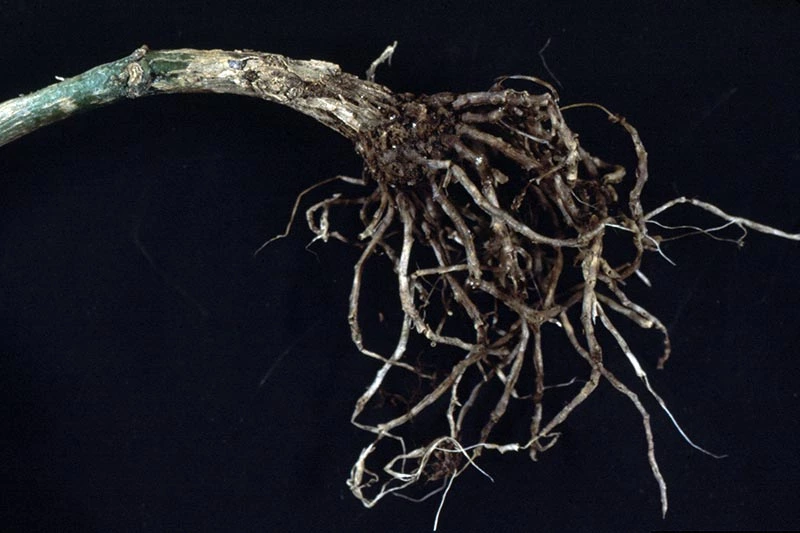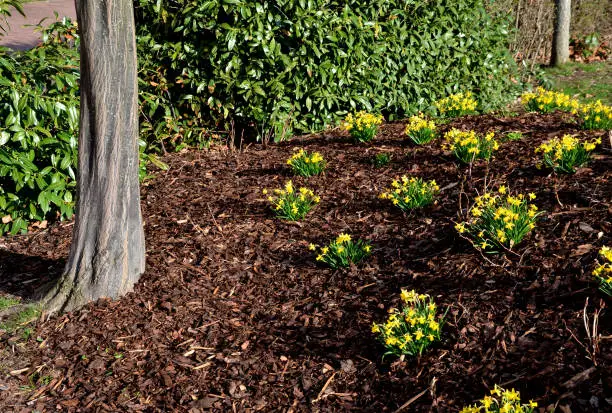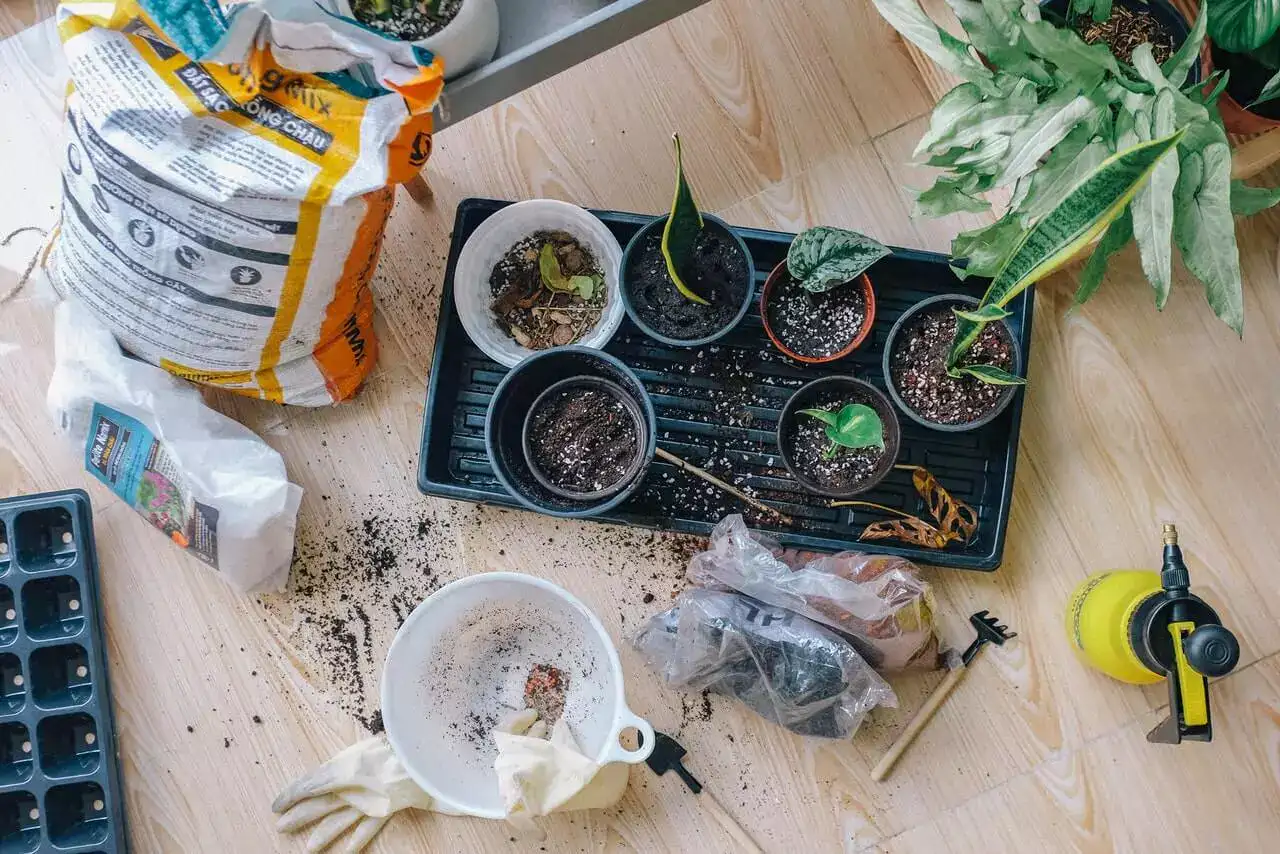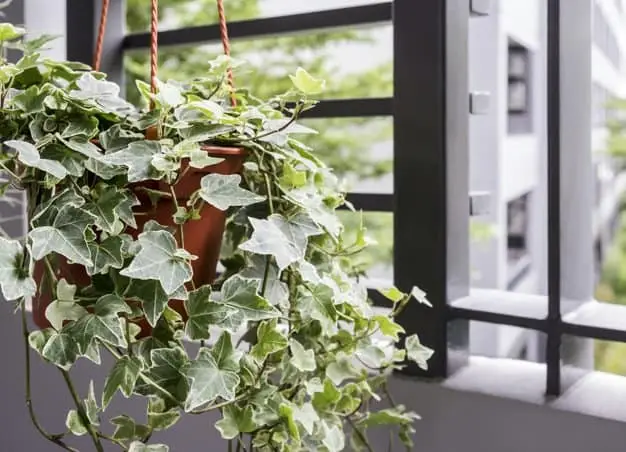You can plant cascading succulents anywhere from pots to hanging baskets, giving you plenty of versatile options for indoor succulents. But which cascades are great and easy to care for? How do you ensure they grow well?
The best cascading succulents include the string of pearls, little pickles, sedum burrito, grey fishhooks, a string of buttons, wax plant, a string of bananas, and lantern flower. These types of succulents grow by trailing outside their pots and are suitable as both outdoor and indoor plants.
What are cascading succulents?
Cascading succulents are plants that dangle or flow out of the container in which they grow like a waterfall. They’re also called danglers, spillers, or trailers, but what makes them unique is how they are easy to propagate. Whether you put them in a hanging basket, vase, or decorative pot, their ability to trail, dangle, or spill over their planter makes them look very beautiful.
These types of plants are easy to grow provided you emulate their wild habitat. They thrive best in well-draining soils, bright indirect sunlight, and adequate water. Also, cascading succulents do well when fertilized once per season.
Best cascading succulents to grow
Like other succulents, danglers are low-maintenance and can grow outdoors or indoors when provided with proper care. While some of them are rare trailing succulents, they can add an exotic feel to your outdoor landscape and uniqueness to your indoors.
Here are the best cascading succulents for your home or vineyard:
1. String of Pearls (Senecio rowleyanus)
A string of Pearls is one of the most popular trailing plants that originate in South Africa. It is best grown in a warm and dry environment. An adult plant has a pendant stem that holds its round leaves. A string of Pearls’ leaves can spill over a container up to three feet. Each pendant stem contains a set of beads or pearl-like leaves.
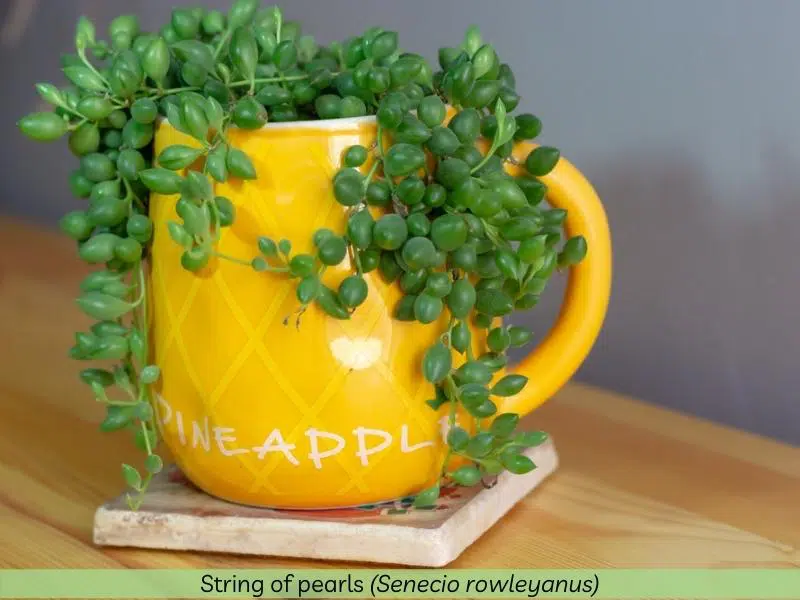
You can grow this cascading succulent in a hanging basket and the pearls will spill over, providing your patio or terrace with the most stylish scenery.
Plant your string of pearls plant in a hanging basket in an area that receives bright indirect sunlight for the plant to retain its greenness. It does considerably well in the morning sun, so you can grow it as an east-facing window plant indoors. Ensure the soil is well-draining and keep it moist.
2. Sedum Burrito (Sedum morganianum)
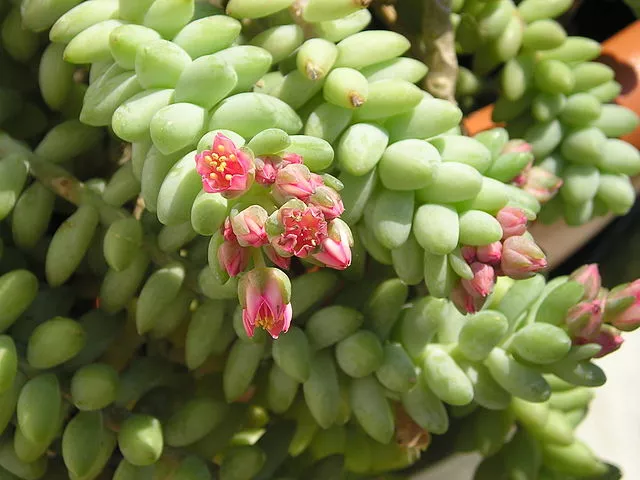
Sedum “Burrito” is a cascading plant native to Southern Mexico and is known for its dreadlock-like stems that can grow up to 3 feet. On its fleshy stem are blue-green or lime green leaves that turn lighter with sunlight. Even though they are closely related to Sedum Morganianum, their leaves are smaller and shorter.
The sedum burrito is a low-maintenance trailing succulent that simply needs well-draining soil, a little water to keep the soil moist, and indirect light. The plant produces sweet-smelling flowers and you can plant it in hanging baskets or trail it out of a wall display.
3. Little Pickles (Othonna Capensis)
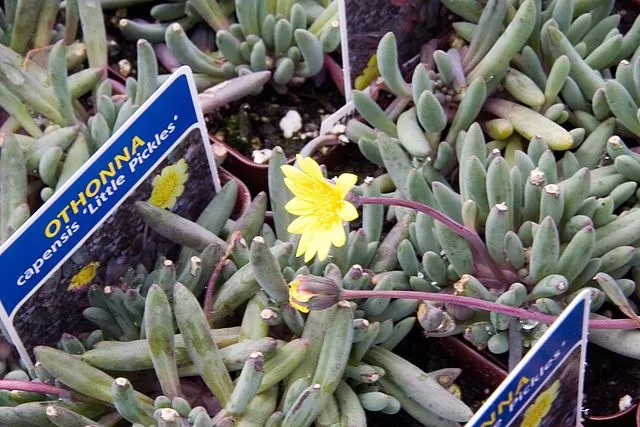
Little pickles are native to South Africa and have vibrant colors, bean-shaped leaves, and flowers that resemble daisies. This trailing succulent can withstand full sunlight, making it one of the hardiest spillers on this list.
Little pickles are best grown in full indirect sunlight and well-drained soil. To ensure the succulent grows to full length and is devoid of any imperfections, put it in a well-draining pot and only water it when the soil is dry. You can adjust your watering frequency during summer when it’s hot and dry. Watering should be less during the winter months.
4. String of bananas (Senecio radicans)
As the name suggests, String of Bananas has green leaves that ape the shape of a banana. You’ll identify it by its leaves that look like fish hooks. It is also one of the fastest-growing succulents. It originates from South Africa, making it a great exotic cascading plant for your garden.
The stems of the string of bananas plant can reach up to 90cm in length. A fully grown String of Bananas can produce white, yellow, or lavender flowers with a sweet cinnamon-like scent.
RELATED: IDENTIFICATION OF HERBS WITH PURPLE FLOWERS
To grow the string of bananas succulent, provide it with a well-draining growing medium and 6 hours of indirect sunlight. You can cut and propagate the stems to regrow the plant. Cut the stems in half, and it will continue to spill its leaves over a hanging basket or pot.
5. Grey Fishhooks Senecio (Fish Hook Senecio)
If you’re a first-time cascading succulent grower, differentiating between String of Bananas and Grey Fishhooks Senecio can be difficult. Fish Hook’s leaves are flatter and more prolonged than String of Bananas. Its leaves have a well-defined shape of a fish hook, unlike the latter.
Pot this cascading succulent in a hanging basket or on the ground with a well-draining soil, and provide it with sufficient light away from frost to allow it to grow to its full length.
6. Trailing Jade (Kleinia petraea)
Trailing Jade’s scientific name is Kleinia Petraea. It’s a houseplant with meaty leaves, known for its trailing habit. Add diluted fertilizer once a month during summer, and your plant will creep over its hanging basket like a waterfall.
7. String of Buttons
A string of Buttons, whose scientific name is Crassula perforate, resembles a pendant or necklace. The plant can thrive well in fast-drying soil with twice-a-month watering during summer, thanks to its drought-resistant properties. It produces star-shaped flowers that line up like a string of buttons.
Provide adequate exposure to enough sunlight then prune it frequently to keep the cascading succulent growth in check.
8. Wax Plant
Of all the slow-glowing cascades, Wax Plant (Hoya pachyclada) is the only plant that doesn’t need high maintenance. Put in a properly draining soil, ensure it is in a warm and humid environment, and its stout stems will grow thicker. During spring and summer, it will bloom with sweet-smelling white flowers.
9. Monkey’s Tail
Monkey’s Tail (Hildewintera colademononis) is a cascading succulent whose greenish-yellow stems mimic a monkey’s tail. On the stems are soft spines looking like hairs that spread all over them. These trailers thrive in properly drained and aerated soils, with sufficient shade light, and once-per-year fertilizer. Apply low-nitrogen fertilizer for the best results.
10. Lantern Flower
Lantern Flower (Ceropegia haygarthi), also known as parachute flower or bushman’s pipe, is an easy-to-grow spiller whose stems can climb up walls. When you provide it with well-drained soil and enough water, its stem will braid itself, forming cream-to-reddish flowers.
This trailing succulent requires proper watering and full-to-partial sunlight.
How do you care for a cascading succulent?
Nurturing cascading succulents can be easy and challenging at the same time. Despite low maintenance, these plants can quickly wilt or change color if they are subjected to unfavorable conditions. the first thing you should know is that they store water in their leaves for long periods.
Whether you prefer planting a string of bananas, sedum burrito, or any other succulent, learning how to care for them can give you the best results. Here is what you need to do:
1. Know that type of succulent suits your location
So that you know, not all succulents can survive indoor growing. For example, bright-colored cascading succulents need sufficient sunlight. That means if you grow them indoors, chances are they won’t do so well.
If your location experiences warm temperatures for the better part of the year, you can start with green succulents. Once they’ve acclimatized to your environment, you can introduce the bright-colored succulents. Of course, the latter will need the most attention. You might want to ensure you tailor their environment in a way that mimics their native location.
2. Ensure your spiller succulent receives enough light (6 hours at most)
Some succulents do well indoors, while others don’t. It is improbable for them to receive enough sunlight when placed indoors unless you place them near a window.
If the windows in your apartment don’t receive sufficient natural light, it would be best to put them in a hanging basket or pot on your patio or terrace. Six hours of bright light is enough for your succulent to grow healthy.
3. Water following the “soak and dry” method
One of the most significant mistakes succulent growers make is overwatering. It’s easy to assume that all plants need daily water intake, but that’s not how succulents work. You see, these plants’ roots soak up in the water but dry out rather quickly. We get how tempted you will be to water your plant the next day just because the outer surface of the soil has dried out.
Unlike other plants, succulents don’t need frequent watering. Twice a month will do just fine during summer and some parts of spring and autumn. During winter, when they’re undergoing a dormant period, they will need once a month watering. Otherwise, daily watering is a quick way of punishing them.
To know if your watering pattern is working for the good of your succulent, assess their new and uppermost leaves. If they are wilting or shriveling up, it’s time to revaluate your watering practices.
4. Grow cascading succulents in well-draining pots
Generally, succulents hate soggy soil so much that they can quickly droop or wilt if you do nothing about it. Their roots need time to absorb water and breathe. Placing them in a pot or hanging basket that doesn’t have holes is one of the easiest ways of killing them.
If you can, please avoid potting them in glasses since they don’t provide adequate airflow. Fortunately, you can buy earthenware pots or create holes in plastic containers for easy drainage.
5. Fertilize them once per season
Cascading succulents are hardy, so they don’t need frequent fertilization like other houseplants. For the best results, fertilize them once per season. The best time to do it is early spring and some parts of autumn.
6. Use fast-draining soil
Ever wondered why succulents are predominant in the driest places of the world? For starters, succulents thrive better in fast-draining soil. Your goal is to emulate its native environment by choosing fast-draining soil. The good news is this type of soil is locally available in almost all places. But if you aren’t sure if your area’s soil bears those attributes, get the right one from your local gardening store or through reputable online retailers.
Summary
The best cascading succulents include the string of pearls, little pickles, sedum burrito, grey fishhooks, a string of buttons, wax plant, a string of bananas, and lantern flower. These types of succulents grow by trailing outside their pots and are suitable as both outdoor and indoor plants.
